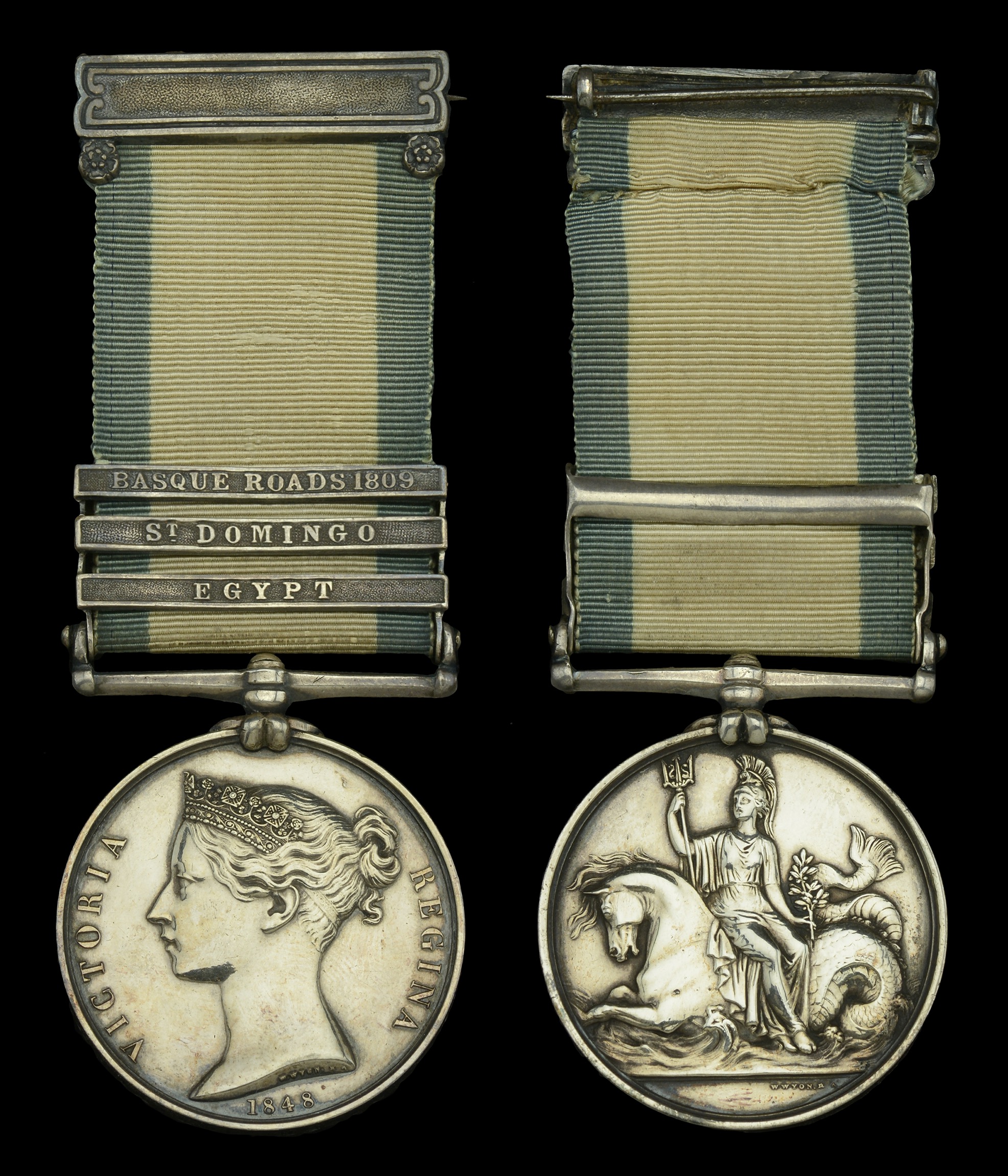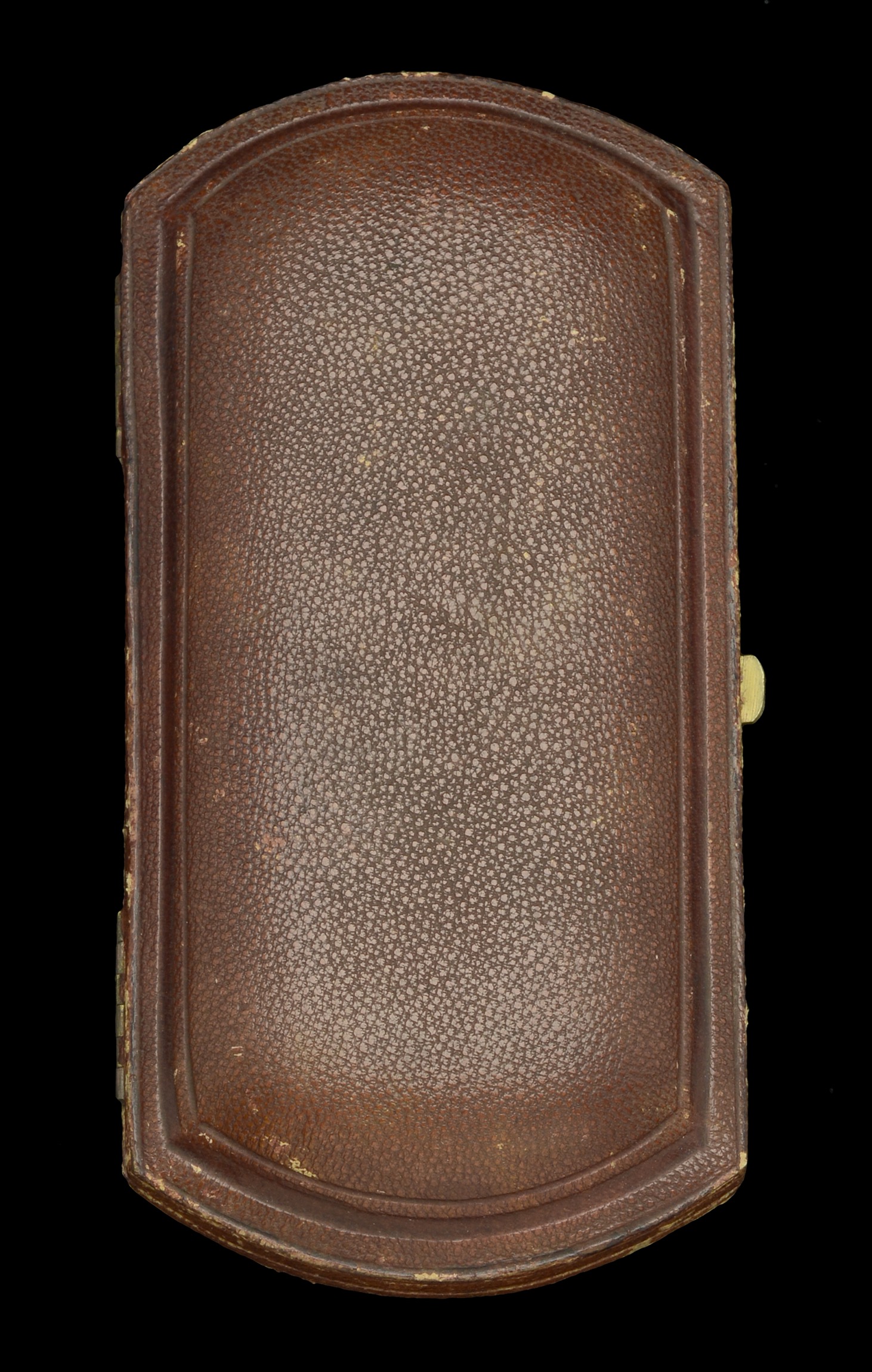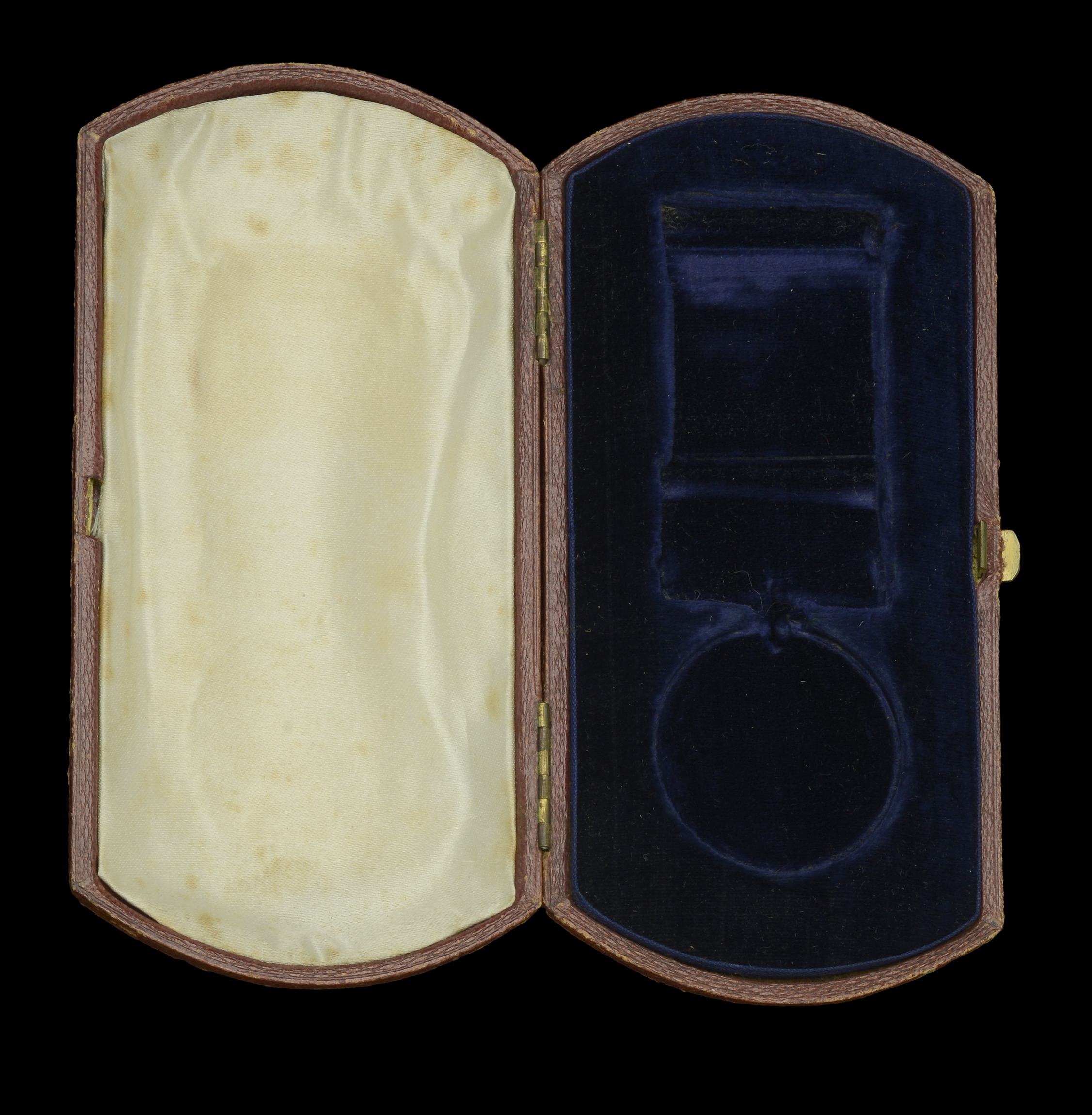The 3-clasp Naval General Service medal awarded to Commander John Taylor, Royal Navy, Midshipman of the Gibraltar at Egypt, and Master’s Mate and Lieutenant of the Donegal at St Domingo and Basque Roads Naval General Service 1793-1840, 3 clasps, Egypt, St. Domingo, Basque Roads 1809 (John Taylor, Master’s Mate.) fitted with contemporary silver top suspension brooch and contained in a fine contemporary fitted case, lightly polished, otherwise toned, nearly extremely fine £4,000-£5,000 --- Importation Duty This lot is subject to importation duty of 5% on the hammer price unless exported outside the UK --- --- Confirmed on the rolls as Midshipman of H.M.S. Gibraltar at Egypt; and as Master’s Mate and Lieutenant of H.M.S. Donegal at St. Domingo and Basque Roads. John Taylor entered the Navy on 6 December 1794, as a Landsman on board the Scorpion gun-brig, Lieutenant-Commander Thomas Crocker, stationed off Jersey, from where he removed, in September 1795, to the Bravo 14, Captain Philip D’Auvergne. In May 1796 he became Midshipman of the Juste 80, Captains Hon. Thomas Pakenham and William Hancock Kelly, the latter of whom, after having served in the Channel, he followed, in May and June 1797, into the Veteran 64 and Gibraltar 80. In this latter ship, which was stationed off Cadiz and in the Mediterranean, he was nominated Acting-Lieutenant on 29 August 1801. Shortly afterwards, in March 1802, he was superseded and placed, once more as Midshipman, on board the Foudroyant 80, flagship of Lord Keith, with whom he returned shortly afterwards to England, and was paid off. Taylor was next employed in the Channel from May 1803 until June 1805, and then again in the Mediterranean in the Naiad 38, Captain James Wallis, and as Master’s Mate in the Royal Sovereign 100, bearing the flag of Sir Richard Bickerton. He was then transferred to the Donegal 74, under Captain Pulteney Malcolm, and in that ship, of which he was created a Lieutenant on 2 April 1806, he continued until March 1811. Consequently, Taylor assisted at the capture of the El Rayo of 100 guns, one of the ships recently defeated at Trafalgar; took part in the action off St. Domingo on 6 February 1806; escorted Sir Arthur Wellesley’s army from Cork to Portugal in 1808; witnessed the destruction on 24 February 1809, of three French frigates under the batteries of Sable d’Olonne; was present, in the following April, at Lord Cochrane’s destruction of the enemy’s shipping in Basque Roads; and shared in an unsuccessful attempt made by Captain Charles Grant of the Diana to destroy the two French frigates Amazone and Eliza, protected by the fire of several strong batteries near Cherbourg. The latter affair took place on the afternoon of 15 November 1810: during the night, Taylor, then First of the Donegal, was sent with two boats belonging to his own ship and the Revenge 74 to essay the effect of Congreve’s rockets on the enemy, and at daybreak on the 16th it was observed that one of the frigates was on her beam-ends and the other had run aground. After he left the Donegal, Taylor was successively appointed Senior, 13 August 1811 and 3 March 1812, of the Royal Oak 74, Captain P. Malcolm; of the Hannibal 74, Captains Samuel Pym and Sir Michael Seymour, both in the Channel; 13 June 1812 and 13 November 1813, of the Maidstone 36 and Romulus 36, armée en flûte, Captains George Burdett and George William Henry Knight, each on the North American station; and 17 May 1815 (after 14 months of half-pay) of the Falmouth 20, also commanded by Captain Knight, off Boulogne. Among other services of a similar character, he commanded the boats of the Maidstone and Spartan frigates at the destruction of the Morning Star and Polly, American privateers of 1 gun, 4 swivels, and 50 men each, in the Bay of Fundy on 1 August 1812; and two days later at the capture, in the same neighbourhood, of a well-armed custom-house cutter and four merchantmen. He remained in the Falmouth until 1 November 1812, and was placed on the list of Retired Commanders on 23 July 1839.












